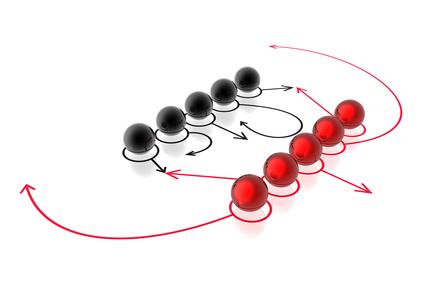 Credit: Dreamstime
Credit: Dreamstime How to improve performance is a constant focus in modern business. Highly competitive environments, escalating change and the speed of that change mean we are always looking for ways to raise the bar.
Performance interventions that don’t work
The most popular choices for performance improvement are training, hiring talent or incentives.
Training rarely works - consistent research into the effectiveness of training shows that 70 per cent of all training initiatives fail. The training is rarely transferred back into the workplace - at least not for long.
Relying on finding, hiring and keeping talent is also an inconsistently successful strategy. Just because someone showed ability in one role in one environment doesn’t mean that ability will automatically transfer to the new role or environment.
Recruiting star performers from other businesses also puts a huge amount of pressure on the start to deliver near impossible results while also alienating the rest of the workforce who are clearly viewed as second class citizens. And, of course it’s expensive because the talent will often negotiate hard for a stellar salary.
As for incentives, unless the work is monotonous and repetitive, incentives don’t work. The fact that incentives often end up promoting bad behaviour is one of the most robustly proven findings in social science and yet we still try them because we don’t know where else to turn.
We need to turn to personality.
What I’ve found across over 3000 profiles of elite performers and working in this area for over 23 years is that everyone has four or five behaviours that evolve as a result of their unique personality.
Read more: The ‘L’ word
Personality and performance
Most of us will do what comes naturally when left to our own devises. We all know this to be true so why not use that knowledge to our advantage to elevate performance the easy way. If you have a major IT implementation program to deliver find people to work on that project that ‘fit’. The more our natural strengths, characteristics, skill set and values fit with what is required in the role and fit with the culture and organisation itself the higher the performance will be.
There are three personality markers that are important to uncover fit - ‘inside’, ‘bright side’ and ‘dark side’.
‘Inside’ identifies your intrinsic motivation. Clearly if what you are required to do in your role is something you are already motivated by or value then incentives or threats are unnecessary.
‘Bright side’ identifies your natural positive behaviours.
Read more: CIO alert: Majority of IT professionals looking to change jobs next year
‘Dark side’ identifies your natural negative behaviours or the behaviours you will demonstrate when under pressure or stressed.
What I’ve found across over 3000 profiles of elite performers and working in this area for over 23 years is that everyone has four or five behaviours that evolve as a result of their unique personality.
These patterns of behaviours are the way we have learned to ‘get along’, ‘get ahead’ and ‘make meaning’ in the world and we will then use those same four or five behaviours consistently.
The only difference between a high performer and everyone else is that a high performer knows what their bespoke behaviours are, or simply deploys them innately at the right time and in the right place most of the time. Average or inconsistent performer is not aware of exactly what those behaviours are so they are either deployed inconsistently or deployed in a role or environment that doesn’t need or value those particular behaviours.
So instead of hiring expensive ‘high maintenance’ talent, investing in endless training programs or instigating costly incentive programs - assess for ‘fit’.
Read more: Chip Felton: The CIO who built a career on big data
Understanding personality allows us all to make sure we are in the right place, doing the right thing so we can bring the best of who we are to the table in a role that values those assets.
Behavioural strategist Warren Kennaugh is the author of FIT: When Talent and Intelligence Just Won’t Cut It (Wiley).
Send news tips and comments to divina_paredes@idg.co.nz
Follow CIO
New Zealand on Twitter:@cio_nz
Clickhere to read the Spring 2015 issue of CIO New Zealand
Sign up for CIO newsletters for regular updates on CIO news, views and events.
Join the CIO New Zealand group on LinkedIn. The group is open to CIOs, IT Directors, COOs, CTOs and senior IT managers.
Join the CIO New Zealand group on LinkedIn. The group is open to CIOs, IT Directors, COOs, CTOs and senior IT managers.
